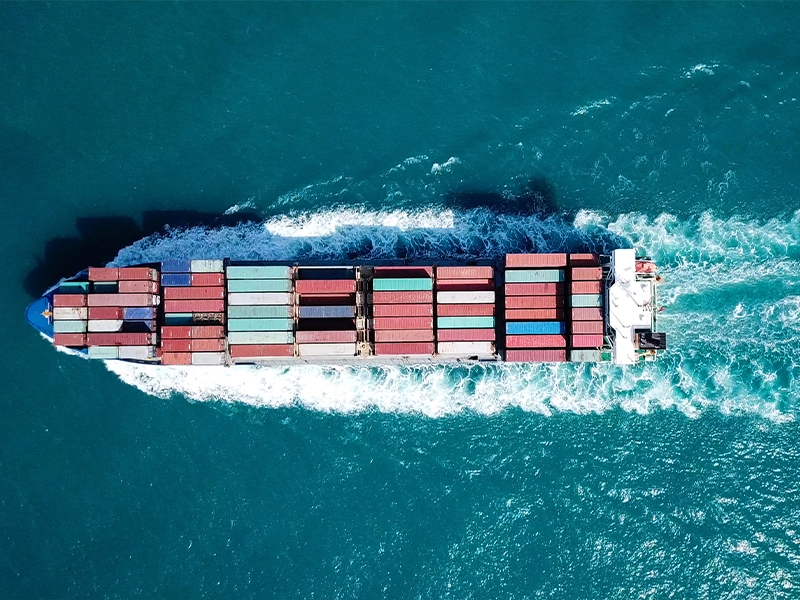Imagine a scenario where a manufacturer in Karachi urgently needs to deliver a critical shipment of electronics to a retail chain in Lahore. The success of this transaction hinges not only on the quality of the products but also on the reliability of the freight transportation.
The Dynamics of Timely Freight Transportation
Have you ever found it puzzling why shipping times vary so widely? The answer lies with shipping duration, which measures how long a package takes from leaving its sender’s location until arriving at its recipient’s. Timely delivery is paramount to meet consumer demand and maintain the retailer’s inventory. Understanding the complexities of shipping durations. Timely freight transportation is essential for maintaining the integrity and efficiency of supply chains in today’s interconnected global economy. It ensures that goods reach their destinations promptly, meeting customer expectations and minimizing disruptions in production and distribution. Transit time can vary depending on the route, the mode of transportation used, and other factors.
5 Factors Influencing Shipping Durations
- Distance and Route
The chosen transport route and the geographical distance between the origin and destination significantly impact transit times. Longer distances generally result in longer shipping durations.
- Customs and Regulatory Procedures
Delays in clearing customs and meeting legal requirements can significantly increase shipping times, particularly for international shipments. Efficient handling of paperwork, accurate documentation, and compliance with customs protocols are essential to minimize these delays.
- Weather and Environmental Conditions
Flights can be delayed or rerouted due to severe weather conditions. These disruptions can lead to extended transit durations and additional costs for rebooking or alternative transport solutions. Such weather-related delays can impact delivery schedules and inventory management plans.
- Infrastructure and Logistics Efficiency:
Transit times are directly impacted by the effectiveness of freight transportation infrastructure and logistics networks, which include storage and distribution facilities. Faster deliveries can be linked to well-maintained facilities and well-planned routes.
- Mode of Transport
Different modes of transportation like road freight, air freight, and sea freight, each serve distinct purposes in the logistics industry. Each mode offers unique advantages tailored to different shipment needs.
Transit Time Comparison: Sea Freight vs. Air Freight vs. Road Freight
- Road Freight
Road freight provides flexibility and cost-effectiveness for local delivery, making it ideal for shorter distances inside Pakistan or regional areas. Transit times might vary greatly, according to the destination and state of the roads, from a few hours to many days, with different times depending on the distance and the state of the roads.
- Air Freight
Air freight is essential for critical items that need to be delivered quickly over great distances because of its speed. International air freight is crucial for products that need to be delivered quickly because it can usually do so in two to seven days. Ideal for items that need to be sent quickly and are immediate.
- Sea Freight
Sea freight is more affordable for delivering huge amounts across vast distances. International sea freight shipments may take a few days to a few weeks. Depending on the route and ports involved, international shipments usually take 20 to 45 days. Perfect for cost-effectively moving huge quantities.
EMA Shipping: Selecting the Perfect Mode of Transport for Your Freight Needs
EMA Shipping focuses on optimizing freight transportation by evaluating each shipment’s particular needs. EMA Shipping uses its expertise to suggest the best means of transportation, whether it be by air, sea, or land. With this tailored approach, clients are guaranteed to receive logistics solutions that meet their delivery deadlines and business goals efficiently and economically.
EMA Shipping handles logistics in an organized manner. They efficiently discuss possible hurdles like customs processes and weather-related delays by keeping up with industry trends and regulatory changes. This effective approach improves transparency during the shipping process, giving customers peace of mind and assurance that their items will arrive on schedule.
FAQS:
- How long does sea freight typically take?
Sea freight transit times vary but generally range from 20 to 45 days for international shipments, depending on the route and ports involved.
- How does EMA Shipping select the best transport mode for my freight?
EMA Shipping evaluates your shipment’s specific needs to choose the optimal mode as sea, air, or road freight, that balances delivery speed and cost-effectiveness.
Conclusion:
Shipping duration optimization is essential for effective global commerce. A timely delivery, which is dependent on variables including distance, customs processes, weather, and logistics efficiency, guarantees customer happiness and business continuity. Effective logistics management from companies like EMA Shipping helps you establish the proper balance between speed and cost-effectiveness when selecting the best means of transportation.

